- Home
- Lisa Appignanesi
Mad, Bad, and Sad: A History of Women and the Mind Doctors Page 2
Mad, Bad, and Sad: A History of Women and the Mind Doctors Read online
Page 2
As historians of medicine have increasingly argued, illness is the product of a subtle interplay between cultural perspectives and what is also a shifting biological reality. This is particularly the case with mental illness. In the 1820s and 1830s George Man Burrows was as certain that he had proof of the links between the uterine system and the disordered brain as some doctors and drug companies are today that what is known in the psychiatric manuals as ‘Female Sexual Dysfunction’ is a question of specific hormones. There was a sense during the last years of the twentieth century that certainty had been arrived at and that the causes of mental illness had been located in brain chemistry, or so the pharmaceutical companies had led us to believe. The new century has brought altered perceptions about biology itself.
If symptoms or disorders can sometimes have aspects of a collaborative production between patients and doctors, this does not make the torment, the anguish of a mind gone awry, any the less real. And intervention by mind doctors can make illness better, though the kind of intervention–care or pill or talk or time away from the family–may not always be as instrumental in the process as is sometimes thought. I was surprised to discover that–in so far as people might be counting the same thing–the percentage of cures through care or simply the passage of time does not seem to have changed all that much over the two hundred or so years that this book’s story charts. The success rate of the early French alienists, who had an interest in statistics, does not differ markedly with certain disorders from that of our own far more chemically sophisticated mind doctors. Our managing of the most extreme forms of mania or delirium has, however, improved.
I decided to focus on women as a way into this history of symptoms, diagnoses and mind-doctoring for various reasons. Perhaps the first is simply that there are so many riveting cases of women, and through them a large part of what we recognize as the psy professions was constructed. With John Forrester, I had explored some of this terrain in Freud’s Women.
There is more. Contemporary statistics always emphasize women’s greater propensity to suffer from the ‘sadness’ end of madness. Go to any hundred websites and this will be reiterated, and perhaps not only because women buy more self-improving drugs:
Women are twice as likely to experience depression as men.
Depression is the leading cause of disability in women.
Almost 15 per cent of women suffering from severe depression will commit suicide.
Approximately 7 million women in the United States are clinically depressed. In Britain, one out of every nine seek help for a mixture of anxiety and depression.
Forty per cent of those claiming incapacity benefit in the UK do so on grounds of mental illness: the majority are women.
These figures may be true enough. Certainly if they aren’t ‘true’, the cultural illusion prevails. A magazine like Psychologies, which looks at the softer side of psychic order and disturbance, always carries a woman’s face on its cover, as if psychology, that whole business of understanding the (troubled) mind and relations, were uniquely a feminine undertaking, whatever the gender of the doctors. Hardly surprising to find that two out of three clients for the talking cures offered by Cambridge University’s Staff Counselling Service are women. Everything conspires to gives us a sense that women are key subjects of psychiatric illness as well as the vehicles through which the discipline has taken on its shape.
The study of women, madness and mind doctors has its own history, and one which has gone through several shifts since Simone de Beauvoir first explored the terrain in The Second Sex. What came clear in that major study was that a particular period’s definitions of appropriate femininity or masculinity were closely linked to definitions of madness. Not conforming to a norm risks the label of deviance or madness, and is sometimes attended by confinement. For Friedan, Millett, Greer, the great feminists of the second wave, mind doctors constituted the enemy, agents of patriarchy who trapped women in a psychology they attributed to her, stupefied her with pills or therapy, and confined her either to the ‘madhouse’ or the restricted life of conventional roles. The promise was held out that women’s rise in the professions would change all this.
Historians of the 1980s and ’90s showed us that not only were there hidden prejudices in the way in which women were conceived of and treated, but that easy notions of historical progress and objectivity were themselves to be interrogated. It became clear that disease as much as gender and biology were hardly fixed universals, free of their time’s, or our, ways of seeing. The history of psychiatry was not just the history of a great march down the Boulevard of Science towards immutable scientific laws and better drugs for everything. Today, we might want to question whether brain scans and neurochemistry, whatever else they may teach us, really do hold the keys to an ultimate knowledge of the mind and its disorders.
One of the questions I set out to explore in writing this book was how the growing number of women on all sides of the mental health professions had reshaped the practice; whether, indeed, they had made things better for women and in the process redefined the ‘female malady’. My findings, which make up the last section of this book, did not always live up to my own hopes; but the habit of interrogating history or the present doesn’t stop because its actors change gender. Alternatively, whatever my own wish to separate biology altogether from destiny, my exploration did make me think again that certain events in a woman’s life, whether childbirth or menopause, could well in some cases bring with them a susceptibility to disorder.
Clifford Geertz, the great anthropologist, once talked of ‘blurred genres’, a kind of thinking and writing which drew on any number of mixed, cross-disciplinary sources to arrive at a thick texture of descriptions. I make no apology for using what may at first seem like a random assortment of materials, from philosophy or text book to hospital notes, memoir, letters, biography and popular magazines. I have also plundered the work of more specialist historians who over these last decades have done so much to fill in the gaps of a riveting set of practices and ways of thinking about the human. I have made my way through this wealth of material by focusing in on individual cases. Cases illuminate. They allow us to tease out the intersections and interactions of culture, psychiatric practice and illness in a given historical moment. They show us how disorders are suffered, but also lived over time. What they clearly reveal is that lives can be both productive and punctured or punctuated by madness and sadness, let alone badness.
I have been drawn by two kinds of cases. There are those which retrospectively divulge the various threads that go into the thinking of their time and so exemplify a condition. Such, for example, are Mary Lamb, Alice James, Celia Brandon, Sylvia Plath and Marilyn Monroe. Others, like those of Henriette Cornier, Miss Beauchamp, Charcot’s Augustine and Freud and Breuer’s Anna O, are cases which were important in moving the profession and the understanding of mental disorder forward in their own time. Narrated or exhibited to a wide public, these cases also played into the mimicry and diffusion of symptoms and diagnoses. Because I am also interested in the whole protean process of symptom-shaping, I have deliberately not steered away from the famous cases. After all, Sylvia Plath’s iconic marriage of great talent, depression and suicide made her into an influential model of one way of being woman.
The book begins in 1796 with Mary Lamb because that turn of the century marked a moment before mind-doctoring in any modern sense had begun, though some of the philosophical currents which would shape it were under way. Her story provides a useful point of comparison for what comes after. The next three sections chart the rise of the new science, particularly in Britain, France and then America, up into the present. Each chapter coalesces around a dominant cultural interest, or form of understanding, which also marks prevalent sets of diagnoses and symptoms. My ‘theory’, such as it is, is all in this structure, which is also a means of selection.
It became clearer and clearer to me, as my research went on, that particular periods for whatever
reason threw certain expressions of mental illness into view and that diagnoses or explanations clustered around these. Deep historical forces, it would seem, sometimes bring to the surface certain crystallizations of disorder and its antidote, though the second can occasionally come first, as my last chapter on the pharmaceutical industry makes evident.
Revolutionary France and the period in which that diminutive Corsican Napoleon rose and rose to become Emperor saw the mind doctors and their patients focussing in on the passions, ambition key amongst them. Unlike Napoleon, that indefatigable revolutionary Théroigne de Méricourt ended her days in an asylum, a sufferer from ‘mania’. By the end of a tired nineteenth century, sleep in a variety of forms from hypnosis to dream had its psychological moment: mediums, like the famous Hélène Smith, were studied in their trance states. Sex, love and, in our own epoch, food, body shape and abuse have all had their time, both as the focus of symptoms and as points of scientific interrogation.
As for solutions, human care (and what is good doctoring, at its root, but that, plus a useful placebo effect!) may often be more effective than scientific cure, as some of the odd partnerships in the history of mental suffering show–whether between sister and brother, wife and husband, or even patient and therapist, though the latter would probably prefer to call this care ‘science’. Policy makers might also find it worth noting that on the whole when asylum populations go up, prison populations go down, and vice versa. And whichever form of confinement period and place decide on, humane care, attentiveness and occupation help. Few people are mad, bad or sad continually and for ever: if the pain endured by the sufferer is frightening, unbearable and damaging, often to those around her as well, it can dissipate, too. There are no firm rules where sadness and madness are concerned. But there can be, as this history shows, full and intriguing lives–such as those lived by Virginia Woolf or Sabina Spielrein. Heroes exist on both sides of that doctor-patient divide which has, in any event, for the last hundred years been increasingly permeable.
Over the historical span this book covers, women have moved increasingly from being patients and subjects of study or analysis to being, not only patients, but themselves mind doctors of a variety of sorts. Pinel and Esquirol, in the early nineteenth century, already used their asylum patients as carers once they had improved a little. Many of Freud’s women patients became analysts: indeed, psychoanalysis, and various kinds of psychotherapy, build the candidate’s ‘illness’ or problems into their training. The ways in which women’s presence in the professions may have changed the whole sphere of mind-doctoring or indeed helped to give rise to new illness classifications is one of the themes of the last part of this book.
But first, enter Mary Lamb, writer and matricide.
PART ONE
A TIME BEFORE…
1
MAD AND BAD
On Saturday 24 September, 1796, The Times of London carried the following report of a matricide.
On Friday afternoon the Coroner and Jury sat on the body of a Lady, in the neighbourhood of Holborn, who died in consequence of a wound from her daughter the preceding day.
It appeared by the evidence adduced, that while the family were preparing for dinner, the young lady seized a case-knife laying on the table, and in a menacing manner pursued a little girl, her apprentice, round the room. On the calls of her infirm mother to forbear, she renounced her first object, and with loud shrieks approached her parent. The child, by her cries, quickly brought up the landlord of the house, but too late. The dreadful scene presented to him the mother lifeless, pierced to the heart, on a chair, her daughter yet wildly standing over her with the fatal knife, and the old man her father weeping by her side, himself bleeding at the forehead from the effects of a severe blow he received from one of the forks she had been madly hurling about the room.
For a few days prior to this, the family had observed some symptoms of insanity in her, which had so much increased on the Wednesday evening, that her brother, early the next morning, went to Dr. Pitcairn, but that gentleman was not at home. It seems the young lady had been once before deranged. The Jury of course brought in their verdict, Lunacy.
The unnamed ‘young lady’ who stabbed her paralysed mother several times, and wounded her senile father, was Mary Lamb, then thirty-one years old and named by the Morning Chronicle, which carried the story two days later, as a mantua maker. This is the same Mary Lamb who with her more renowned brother, Charles, was to write Tales from Shakespeare, a much loved volume, continuously in print since its first appearance in 1807. Charles was ten years younger than her. His close friendship with Coleridge, together with his poetry, essays and articles, a proportion of which–not unlike Wordsworth’s sister, Dorothy–she had some share in, put the two of them at the urban epicentre of the Romantic movement. Together Mary and Charles ran something of a salon in the early years of the nineteenth century, hosting a ‘ragged regiment’ of poets, scholars, critics, actors, musicians and the occasional sea captain. With her warm, kindly, intelligent face, now forever framed by a frilly bonnet, Mary welcomed the turn of the century’s greatest. Adjectives such as calm, judicious, rational, serene and cheerful were regularly used about her, even by those who knew her history. The close friendships she and her brother enjoyed, the love the pair elicited, are evident in the vast correspondence which chronicles their lives and that of their wide circle.
Today Mary Lamb might very well find herself incarcerated in the psychiatric wing of a prison. How then was she able two centuries ago to live a free, productive, if difficult life after committing a murder and being designated mad?
The family was poor, and Mary at the time of the violent outburst coroner and jury described as ‘lunacy’, its only breadwinner. The father, John Lamb, had been servant and clerk to the lawyer Samuel Salt. His wife Elizabeth Field had served as Salt’s housekeeper. This arrangement allowed the family lodgings in the quiet, leafy enclave of London’s Inner Temple where they shared Salt’s double chambers. It also meant the children had ready access to Salt’s library and benefited from his exemplary generosity.
Mary went to a local day school and studied English composition and arithmetic, before being apprenticed at the age of fourteen to a dressmaker. Salt assured Charles a place at the prestigious Christ’s Hospital school, where he met fellow ‘bluecoat’ Coleridge and developed the love of literature he shared with his sister. At the age of fourteen, again with Salt’s help, Charles trained in a counting house, moved to a post at the South Sea Company, and then to an apprenticeship at the East India Company. Of the seven Lamb children only three survived into adulthood: the eldest, John, was Mrs Lamb’s favourite. He was tall and blond, unlike the next sibling, Mary, and the youngest, Charles. Brother and sister, both dark and small, the former afflicted with a limping gait and a worse stammer, were bonded from the first, in part by their mother’s coldness, in part by their love of books. They were also bonded by an experience of madness, which in Charles’s case was characterized by what he called melancholy, and in Mary’s by repeated bouts of mania.
Samuel Salt had been dead three years by the time of the murder. His death had precipitated a run of ill-fortune. The family had had to move from their home in the Temple. Grandmother Field, housekeeper to a large country house complete with grounds the children adored and visited regularly, had also died, and with her the link to this second home. The Lambs’ new quarters in Holborn were cramped and made more so by the live-in presence of a grumpy, aged aunt. The father, though only fifty-eight, suffered from progressive dementia. The mother, at fifty-six, lay paralysed from a series of strokes. John had had a serious accident, was delirious with the subsequent infection and also living at home. Mary had the Sisyphean task of looking after all the infirm and catering to their needs. Since Charles was still serving his apprenticeship, Mary was also the family’s principal earner. She sewed cloaks all day and often into the night, when the only bed awaiting her was one shared with the paralysed mother who had n
ever shown her any affection.
The punishing routine had already helped to bring on one stretch of delirium in the winter of 1794–5. This was probably the prior period of derangement referred to by the coroner and noted in the Morning Chronicle: ‘the young Lady had been once before…deranged, from the harassing fatigues of too much business’. A worried and perhaps guilty Charles had then written about his ‘guardian angel’ Mary’s illness to Coleridge, always his intimate, who had commiserated in a poem. Coleridge, too, knew what it was to love and in Coleridge’s case permanently lose a sister to whom all those ‘hidden maladies’ of the heart could be communicated. In the poem, Coleridge also praises the Mary he already admired: her affection, wisdom and mildness are features other friends commented on throughout her life.
Her Soul affectionate, yet wise,
Her polish’d wit as mild as lambent glories
That play around a holy infant’s head.
At the time of Mary’s first recorded illness, Charles was tormented by an intense but unrequitable love, the most acute passion of his life. Mary took the brunt of frustration he couldn’t air elsewhere. ‘To My Sister’, written a little later, underscores Charles’s guilt.
If from my lips some angry accents fell:
Peevish complaint, or harsh reproof unkind,
Twas but the error of a sickly mind,
And troubled thoughts, clouding the purer well,

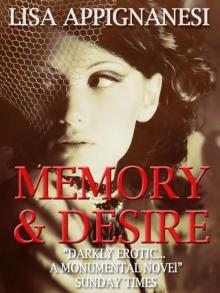 Memory and Desire
Memory and Desire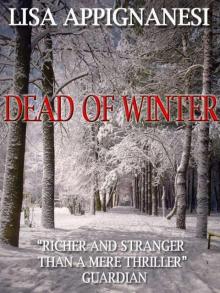 The Dead of Winter
The Dead of Winter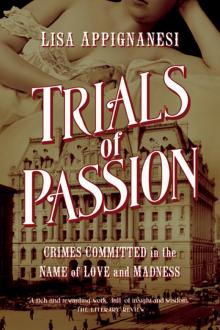 Trials of Passion
Trials of Passion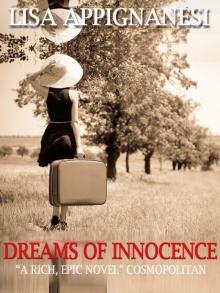 Dreams of Innocence
Dreams of Innocence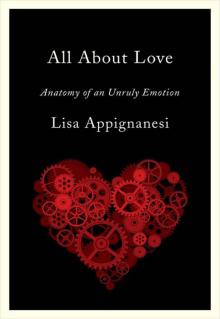 All About Love: Anatomy of an Unruly Emotion
All About Love: Anatomy of an Unruly Emotion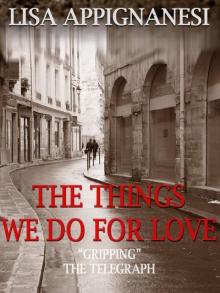 The Things We Do For Love
The Things We Do For Love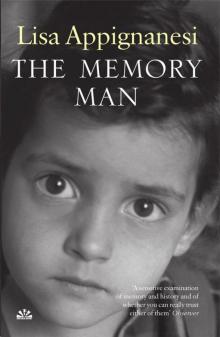 The Memory Man
The Memory Man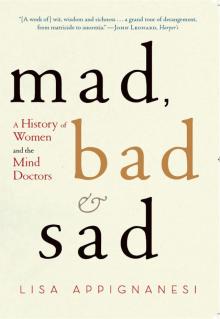 Mad, Bad, and Sad: A History of Women and the Mind Doctors
Mad, Bad, and Sad: A History of Women and the Mind Doctors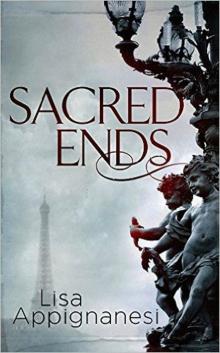 Sacred Ends
Sacred Ends Paris Requiem
Paris Requiem Sanctuary
Sanctuary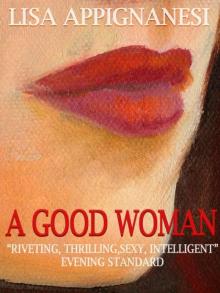 A Good Woman
A Good Woman